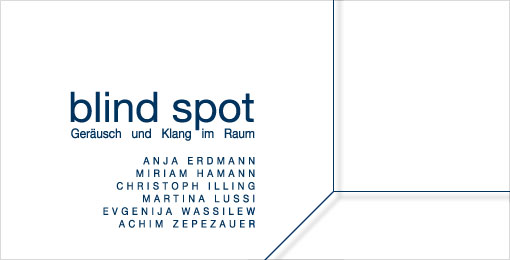
The exhibition focuses on sound installations allowing for multiple possibilities of synaesthetic perception. Given an equitable attention, the audible and the visual merge symbiotically to form space-temporal events whose variable characteristics and processual structures depend not least on the moment and the position of the visitor within the exhibition space.


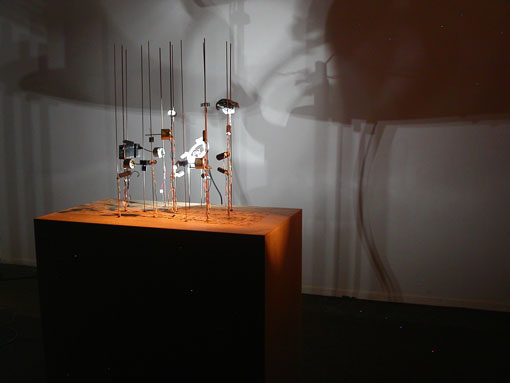
"Raumsucher" consists of digitally controlled motors and lighting elements. The installation repurposes the motors as crude sound generators. Moving shadow projections are animated by changing light sequences of the LEDs. Together they form an audio-visual network, temporally structured movements, - to create a spatial experience.
Raumsucher explores the difference between object and projection, construction and imagination. In search of manifold ways to perceive space.
anja-erdmann.de
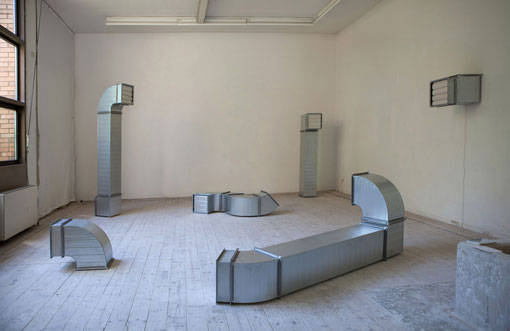
The work 3'2,2 m3 is the result of an investigation into the sculptural presence of everyday objects and the function of sound as immaterial material. At first the objects formed from ventilation shafts evoke the impression of a purely sculptural and static work. However, excess pressure flaps have been built into the individual ventilation ducts, and ventilators control the movement of their fins. The actuation varies and is employed as in a composition.
miriamhamann.com
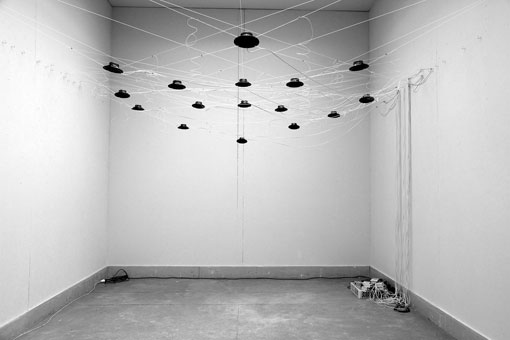
"Brain Decomposition | sound installation 1" conveys the spatial nature of
brain waves. By using multi-channel playback the presented work intends to
make the space of the skull audible. Our recordings originate from a
linguistic experiment, in which 30 electrodes attached to the skull served as
sound sources.
sinuous.de
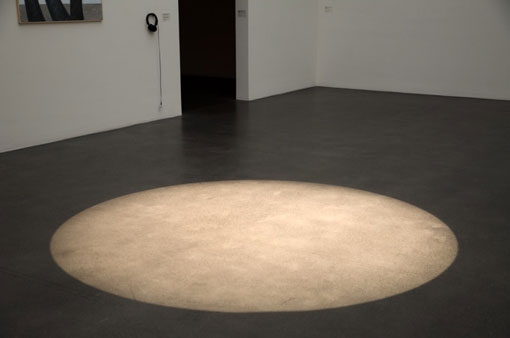
In the middle of the exhibition space is a spotlight that projects a circle of light onto the floor. Headphones attached to an iPod hang on the wall; next to those are a sign with the title of the work and instructions for the visitor: “Put on the headphones and start the piece on the iPod. Walk counterclockwise along the edge of the projected circle until the piece has ended.”
Recordings of the electric guitar provided the source material for a calm, spherical composition which by means of offset repetitions consistently generates new sonic structures. The circular pacing creates both a physical and mental space in which to experience the audio composition, and through which a heightened concentration upon the composition’s subtle auditory occurrences is enabled.
martinalussi.ch
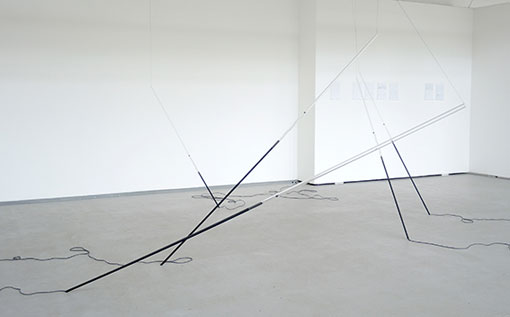
The sound of a tempest, simulated through the speed of the wind during a drive, was captured out of a window in thin glass tubes of various lengths and a small microphone placed inside the glass. The glass tubes recorded the blow of the wind up to 210 km/h, thewind speed of a hurricane. Each tube produced unique sequences of whistling tones and noises, steered by the blow of the wind during the recordings. These sounds are then played back by small speakers inside the tubes. The fragile construction leans forward inthe space, fixed on pivot arms and hold up by single threads from the ceiling.
evgenija-wassilew.com
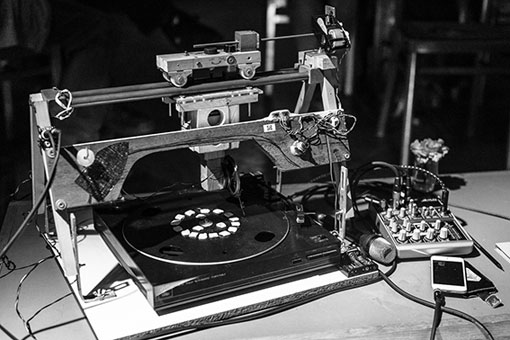
The "Cardtalk Cutting Lathe" is a machine, with which speech can be cut onto the backside of old CDs. The finished pieces can be played back by a usual record player. But the housing is as well an electricity-free phonograph made from cardboard, that was already used by missionaries in the 1960s.
kuhzunft.com